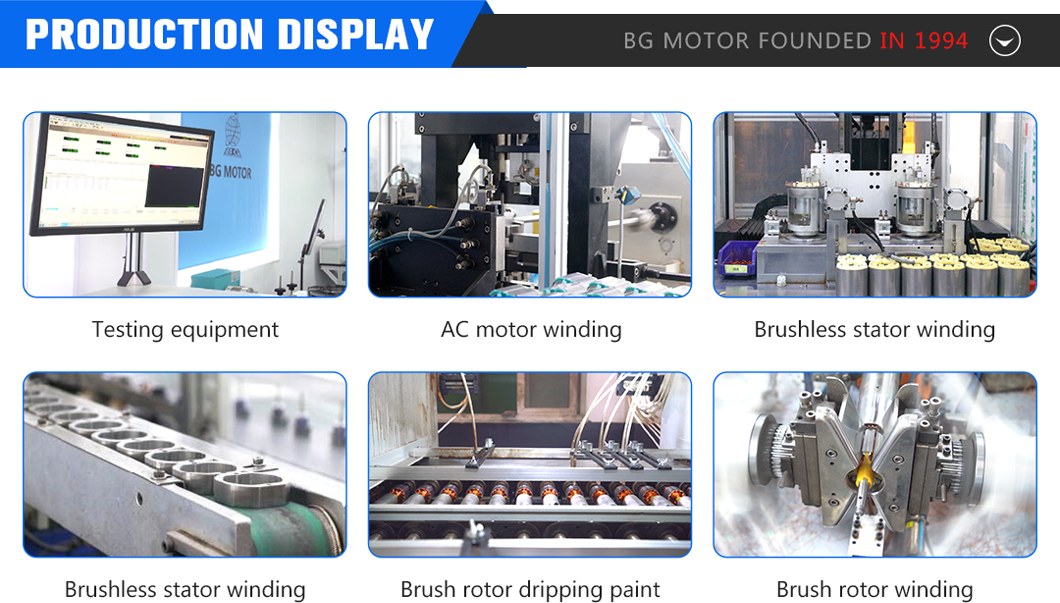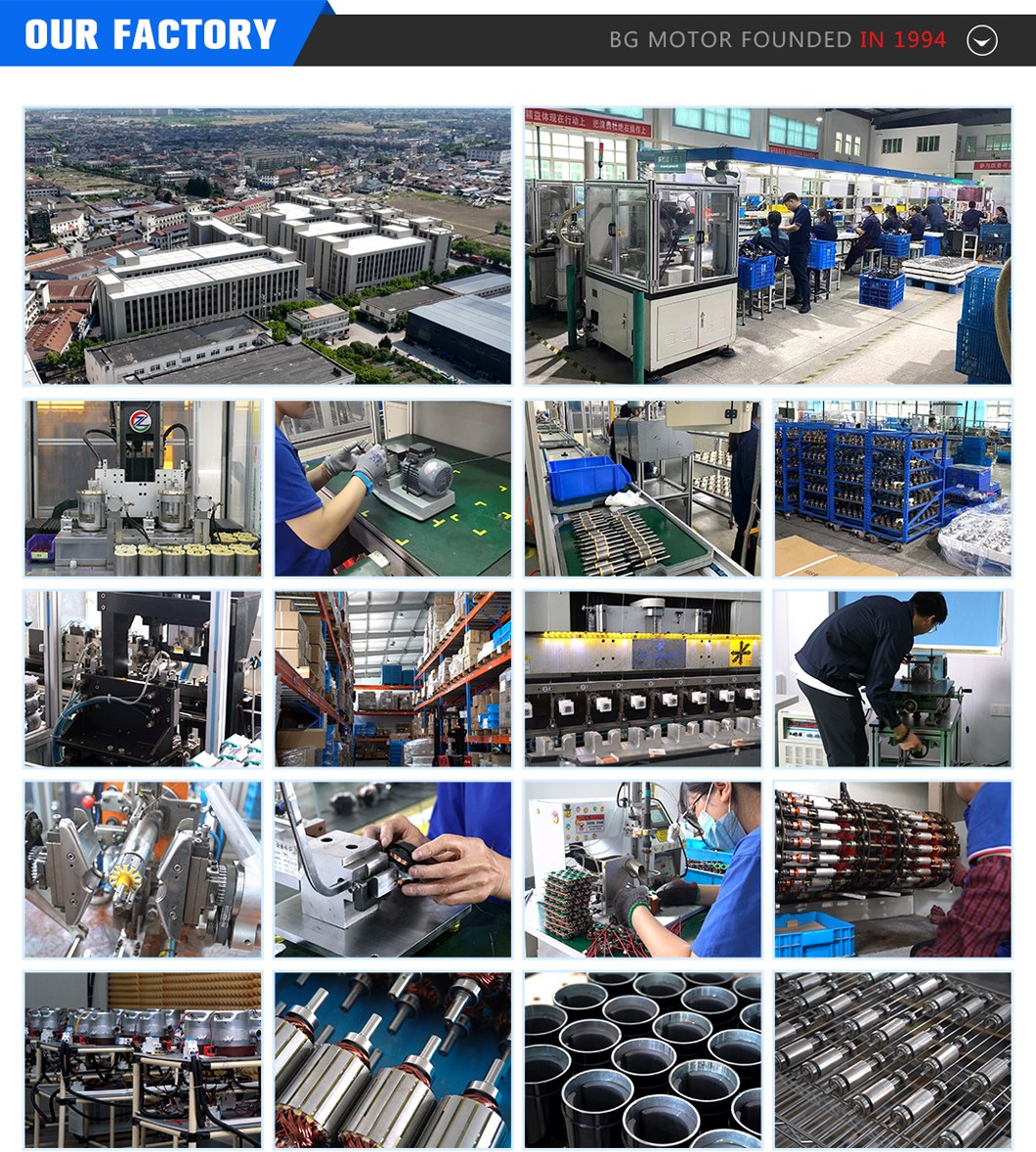The simplest and most straightforward feature of an electric motor is "moving", which converts electrical energy into mechanical energy while driving the equipment to achieve the planned good operation.
Not to mention powerful and complex industrial machinery, such as food processors, automated robots, AGV transportation equipment, etc. These small, compact, and powerful electric motors can be found everywhere in everyday life.
Below are examples of electric motors in household appliances and how they work in detail.
Motor function: The motor in the vacuum cleaner is mainly responsible for driving the fan to rotate and generate suction power to suck in dust and dirt.
Working principle: When the vacuum cleaner is started, the motor starts to rotate at high speed, driving the fan blades to rotate at high speed to form a negative pressure airflow. This negative pressure attracts the surrounding air and dust on the ground through the ducts of the vacuum cleaner into the dust bag or dust cup. The power and speed of the electric motor directly determine the suction power of the vacuum cleaner.
Motor function: The motor is responsible for driving the drum or agitator to rotate in the washing machine to complete the process of washing, rinsing and dehydration.
Working principle: The motor of the washing machine drives the drum to rotate through the transmission system. When the motor starts working, the rotation of the drum or agitator helps the water flow and detergent to rub against the laundry and clean it. In dewatering mode, the electric motor rotates the drum at a higher speed and uses centrifugal force to expel moisture from the garment.
Motor function: The motor in the electric fan drives the fan blades to rotate and helps the air circulation.
Working principle: The motor of the electric fan drives the fan blades to rotate through the current. When the motor starts running, the fan blades rotate rapidly, pushing the air to flow, resulting in a cooling effect. The rotational speed of the electric motor can regulate the wind speed, while the design of the fan and the angle of the blades determine the range and effect of the air flow.
Motor function: The electric motor inside the air conditioner is usually used to drive the compressor, internal and external fans and water pumps to ensure the cooling or heating function of the air conditioner.
Working principle: The electric motor of the air conditioner drives the compressor to compress the refrigerant to a high pressure state, and then conveys it to the evaporator or condenser through the pipe. At the same time, the internal and external fans are also driven by electric motors, which help the air flow and distribute the cold or hot air evenly throughout the room. The electric motor plays a very important role in the whole process, ensuring the efficient operation of the air conditioner.
Motor function: In the refrigerator, the electric motor drives the compressor to work to maintain a low temperature environment.
Working principle: The electric motor of the refrigerator compresses the refrigerant by driving the compressor and feeds it into the condenser. In this process, the refrigerant releases heat, becomes liquid and enters the evaporator through pipes, where it absorbs heat and lowers the temperature inside the refrigerator. The speed and efficiency of the electric motor determine the cooling effect and energy efficiency of the refrigerator.
Electric motor function: The electric motor in blenders and juicers drives the blades to rotate and cut, mix or stir the ingredients.
Working principle: When the motor starts, it makes the blade rotate at high speed through the transmission system. The rotating blade is able to effectively cut or stir ingredients such as fruits, vegetables, etc. The speed and power of the electric motor directly affect the effectiveness of the blender, and the higher power electric motor can handle tough ingredients more easily.
The motors of these six household appliances all play a vital role in different usage scenarios. The electric motor provides power to the electrical appliance by turning or rotating to ensure that the equipment can successfully complete various tasks. The characteristics of high efficiency, stability and low noise of the electric motor not only improve the performance of home appliances, but also improve the user experience.
Electric motors in household appliances have some unique features that allow them to work efficiently and stably in different appliances. Here are some of the key features:
High efficiency and low energy consumption:Motors in household appliances often require high efficiency and low energy consumption to ensure energy savings and reduce electricity bills when used for long periods of time.
Low noise and vibration:Motors for household appliances are usually required to have low noise and vibration to avoid interfering with the user's daily life.
Compact design and miniaturizatio:Motors in household appliances often need to be small and compact in order to fit into a limited space.
High speed and strong torque:The electric motor in some household appliances requires high speed and strong torque to complete efficient work tasks.
Long life and stability:Motors in home appliances are usually designed for high durability and long life to ensure that the device can be used for a long time without frequent replacement.
High temperature tolerance:Motors in household appliances often need to have strong high temperature resistance, especially compressors and motors operating under high loads.
Easy to adjust and control:Motors in modern household appliances are usually equipped with a speed regulation function, which can adjust the speed or power according to needs.
High security:The motor needs to have high safety to avoid danger due to overload, short circuit and other problems.
Resistance to environmental factors:The motor needs to have a certain resistance to moisture, dust and corrosion.
Summary
The electric motor in household appliances ensures the high-quality performance and user experience of the equipment due to its characteristics of high efficiency, low noise, strong stability, and long life. The design of the electric motor should not only take into account the power output, but also closely integrate with the use scenarios and functional requirements of the appliance to provide the best working performance.


BG Motor is committed to the design and manufacture of high efficiency,low energy electric motors, especially in the field of home appliances,which can help customers improve the energy efficiency and market competitiveness of their products.The high efficiency of the electric motor not only reduces energy consumption,but also extends the service life of the equipment.
According to the different needs of customers,BG Motor is able to provide highly targeted customized motor solutions.Whether it is power,speed,size,noise control,or specific working environment (such as high temperature, humidity, etc.),BG Motor can tailor the most suitable electric motor to ensure the best performance of the product in household appliances.
In addition,as a source motor manufacturer,we can provide more flexible and diverse design and production to solve the practical problems of customers,we have five automated production lines and 12,000 square meters of production plant,it also holds a number of certificates,can achieve the delivery of goods in the shortest time,choose BG Motor, a reliable motor manufacturer.
Today is a sunny day, I wish you all the best.
 BACK
BACK
Focusing on the industrial trend of the 2025 Canton Fair, BG Motor continues to …
On April 16, 1963, Martin Luther King Jr. famously wrote in Birmingham Prison th…
The 137th Canton Fair in the spring of 2025 will officially kick off on April 15…
Historical trends in electric vehiclesThe development of electric vehicles (EVs)…
In February 2025, BG Motor ushered in the traditional Lantern Festival celebrati…
The new year has begun, and BG Motor is officially back to work! After a refresh…